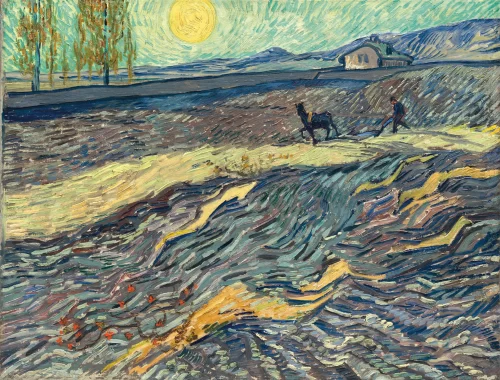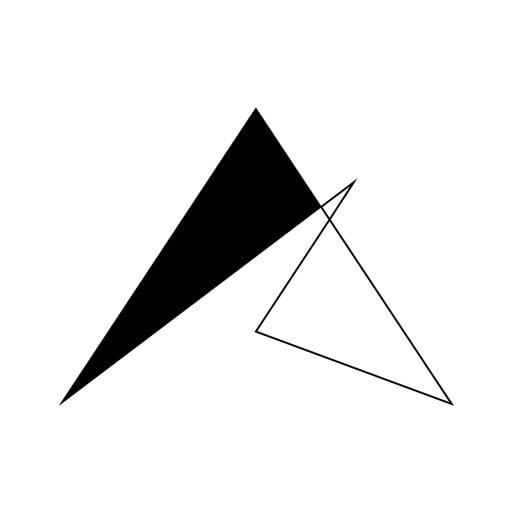In a moving letter, Van Gogh complains
about quarantine after his forced removal
from the Yellow House
New exhibition at Amsterdam's Van Gogh Museum
is a unique opportunity to see Vincent’s
correspondence, normally locked away in a vaulte

Vincent’s letter to Theo (last part), 19 March 1889
Courtesy of the Van Gogh Museum, Amsterdam (Vincent van Gogh Foundation) Letter 750
When Van Gogh was sent to hospital again in March 1889, a few
weeks after mutilating his ear, he ran out of writing paper. The
solution was to use the envelope from a letter he had just received,
addressed to him in Arles by his brother Theo. Having reached the
bottom of the envelope Vincent squeezed in his last words, ending
with an enigmatic query: “It’s perhaps a sort of quarantine I’m being
put through. What do I know?”
Van Gogh had effectively been quarantined by his neighbours. After
slashing off most of his ear he was regarded, quite unfairly, as
dangerous to others—and the police ordered him to be sent
hospital. He was forced to leave his beloved home, the Yellow
House. As Vincent complained to Theo: “Here I am, shut up for long
days under lock and key and with warders in the isolation cell.” He
insisted that he was “not like a madman but… the brother you
know”.

Installation view of ‘Your Loving Vincent’:
Van Gogh’s Greatest Letters, Van Gogh Museum
Courtesy of the Van Gogh Museum, Amsterdam. Photo: Luuk Kramer
This unusual note is on display in ‘Your Loving Vincent’: Van Gogh’s
Greatest Letters, which has just opened at Amsterdam’s Van Gogh
Museum and runs until 10 January 2021. Featuring 40 of the artist’s
most interesting letters, it includes some with little sketches, which
are displayed alongside paintings such as The Potato Eaters (1885),
The Bedroom (1888) and The Sower (1888).
Van Gogh’s letters are the most interesting of any artist in history. Of
the 825 that survive, 789 are in the Van Gogh Museum. For
conservation reasons they are very rarely exhibited, which makes
the present display such an unusual opportunity. Letters range from
the earliest one, written while Vincent was a trainee art dealer in The
Hague in 1872, to his final one, penned four days before he shot
himself in Auvers-sur-Oise in 1890.

Vincent’s letter to Theo, around 21 November 1888
Courtesy of the Van Gogh Museum, Amsterdam (Vincent van Gogh Foundation) Letter 722

Vincent van Gogh’s The Sower (1888)
Courtesy of the Van Gogh Museum, Amsterdam (Vincent Van Gogh Foundation)
Although most of the artworks on show are from the Amsterdam
museum’s own collection, two rarely seen paintings are coming
from private collections. These paintings on show alongside related
letter sketches are Landscape with Leaning Trees (1883) and Field
with a Ploughman (1889), which sold sold for $81m at Christies in
2017.

Vincent’s letter to Theo, around 2 September 1889
Courtesy of the Van Gogh Museum, Amsterdam (Vincent van Gogh Foundation) Letter 798

Vincent van Gogh’s Field with a Ploughman (1889)
Courtesy of a private collection
Two other letters, both recent acquisitions, are of special interest.
Last June, the museum paid €210,600 for the only joint letter by Van
Gogh and Gauguin, dating from 2-1 November 1888 and recounting
plans to work in the brothels.
In May 2019, the Van Gogh Museum acquired the 10-9 February
1890 letter to the critic Albert Aurier, who wrote the first detailed
review of the artist’s work. It was purchased for the museum for
€107,900 by the Hong Kong-based international property developer
Cheung Chung-kiu and his wife Cecilia. The couple are also credited
as the lead supporters of the current exhibition ‘Your Loving Vincent’:
Van Gogh’s Greatest Letters.
With coronavirus restrictions, the Van Gogh Museum currently only
has the capacity for up to around 1,650 visitors a day, less than a
quarter of the usual autumn number. Tickets need to be booked in
advance, online.
Although there is no catalogue for the show, which is curated by
Nienke Bakker, it coincides with the publication of Vincent van
Gogh: a Life in Letters, an anthology of 76 of the finest letters,
published by Thames & Hudson. The full letters, with detailed
annotations, are also available on an excellent dedicated website.






